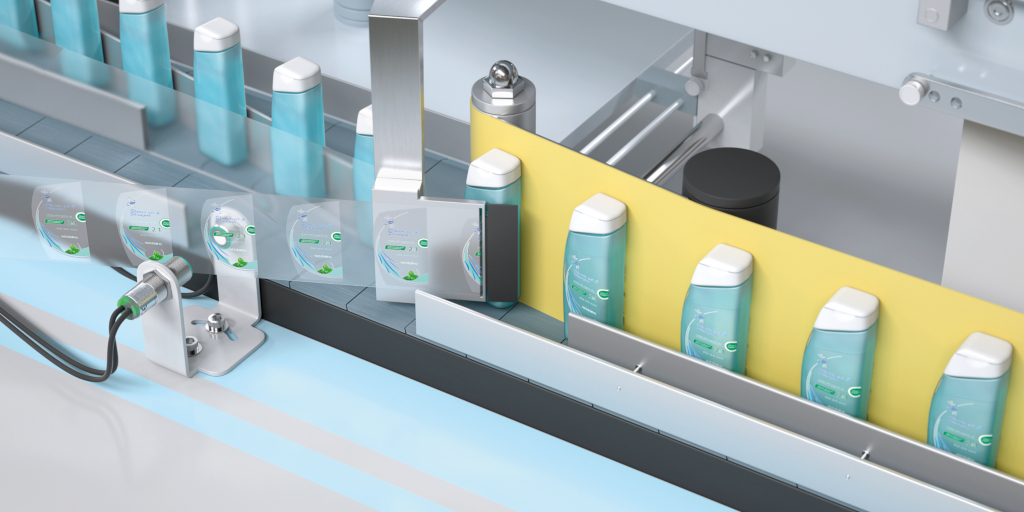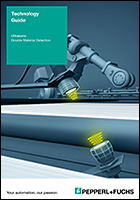Can Ultrasonic Double Sheet Sensors Be Used for Label Detection?
Ultrasonic double sheet sensors help ensure continuous, error-free processes in a range of industrial applications. They are used to prevent more than one layer of material from being fed into a machine. The same technology behind double sheet detection can also be applied to label detection applications.
Reliable and flexible
One key advantage of ultrasonic technology for labeling systems is that the color and material of the label and backing, as well as the width of the gap between labels, makes no difference. Ultrasonic double sheet sensors can detect transparent, reflective, metallic, or non-metallic labels of any color.
Pepperl+Fuchs label detection systems feature an automatic switching threshold adjustment that reliably counts labels and allows sensors to store measurement data from high-speed label production. These ultrasonic sensors can be taught label and backing material combinations to ensure that even slight variations in attenuation are reliably detected.

Pepperl+Fuchs offers different versions of double sheet sensors
Important Factors for Reliable Label Detection
There are a few factors to keep in mind to ensure reliable detection. Label detection systems are sensitive, so folds and creases in the material can cause detection errors and unnecessary switching at the output. The alignment of the ultrasonic transducers can also affect sensing accuracy. Poor alignment can decrease sensing ranges, environmental tolerances, and the ability to detect some materials.
The best detection is located in the center of each transducer, so both transducers must be aligned properly to measure the largest possible amplitude. Proper alignment is also necessary for reaching the widest possible range of materials and the largest possible tolerance reserve. For devices with a cylindrical M18 design, a maximum shaft offset of +/- 1 mm and a maximum angular deviation of +/- 1° should be observed to guarantee maximum performance.
Additionally, response time needs to be considered when mounting label detection sensors. Sensors with response times less than 3 m/s need to be mounted on an angle of 20° and 40° to the vertical of the label. If the short response time sensor is placed vertical to the label, the ultrasonic waves can cause false trips.
Conclusion:
Ultrasonic sensor technology is one of the best options for label detection. The technology gives users flexibility without sacrificing accuracy and reliability.
Free PDF Download
More Information:
Subscribe to our newsletter and receive regular news and interesting facts from the world of automation.

